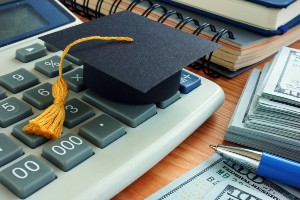
How do you qualify for forgiveness and what do you need to do?
Check Your Eligibility
To be eligible for debt relief under the new plan, you’ll need to meet the following qualifications:
Annual federal income less than $125,000 individually or
$250,000 married filing jointly or as head of household
This applies to the federal tax return you filed in 2020 or 2021. Those who are eligible will receive:
- $10,000 in debt relief for non-Pell Grant recipients
- $20,000 in debt relief for Pell Grant recipients
An online form to apply for relief will be available by early October. In the meantime, you should log into your StudentAid.gov account. Update the information if needed. Updates will be supplied via email and text messaging, so make sure your contact information is accurate.
For those without StudentAid.gov accounts, create one. This makes it easier to manage your loans and monitor your loan forgiveness benefits.
Additionally, you’ll want to provide updated contact information to your loan servicer. Information about your loan servicer is available in your account dashboard.
Once the application for loan forgiveness becomes available in early October, fill it out and submit it as soon as possible. The deadline to apply for loan forgiveness is December 31, 2023. If there are any updates to the program, you can learn about them by visiting your StudentAid.gov account.
Student Loan Debt
Student loan forgiveness is an important issue for many concerned about finances. Loan debt related to education is one of the most common causes of stress and financial turmoil.
For many people, the relief provided by this latest plan will go a long way in alleviating problems. However, for some, this won’t be enough to improve their financial situation.
If you’re struggling with student loan debt, you’re not alone. An increasing number of Americans are finding themselves unable to pay back their student loans. This was why the current presidential administration made it a priority to offer loan forgiveness: they knew it would have a significant impact.
There are a few things you can do if you’re struggling to repay your student loans if you have a remaining balance after loan forgiveness and you’ll struggle to keep up with the payments.
First, you can try to negotiate with your lender. If you can’t afford your monthly payments, try to negotiate a lower interest rate or a shorter repayment period.
You can also look into consolidation or refinancing your loans. Consolidation means combining your loans into one single loan with one monthly payment. Refinancing means taking out a new loan at a lower interest rate to pay off your existing loans.
You can also consider enrolling in an income-based repayment plan. These plans are based on your income and family size, and they can lower your monthly payments.
Try your best to not default on your loans. This damages your credit score and makes it harder to get a loan in the future.
Speak to an Experienced Attorney About Student Loan Debt Forgiveness
Regardless of what type of debt you have and whether or not you qualify for student loan debt relief, we can help. To learn more about managing student loan debt, contact R. Flay Cabiness, II, P.C. at (912) 417-5041 (Brunswick, GA); (912) 809-2141 (Hazlehurst, GA) or; (912) 324-3176 (Jesup, GA) to schedule a consultation.


